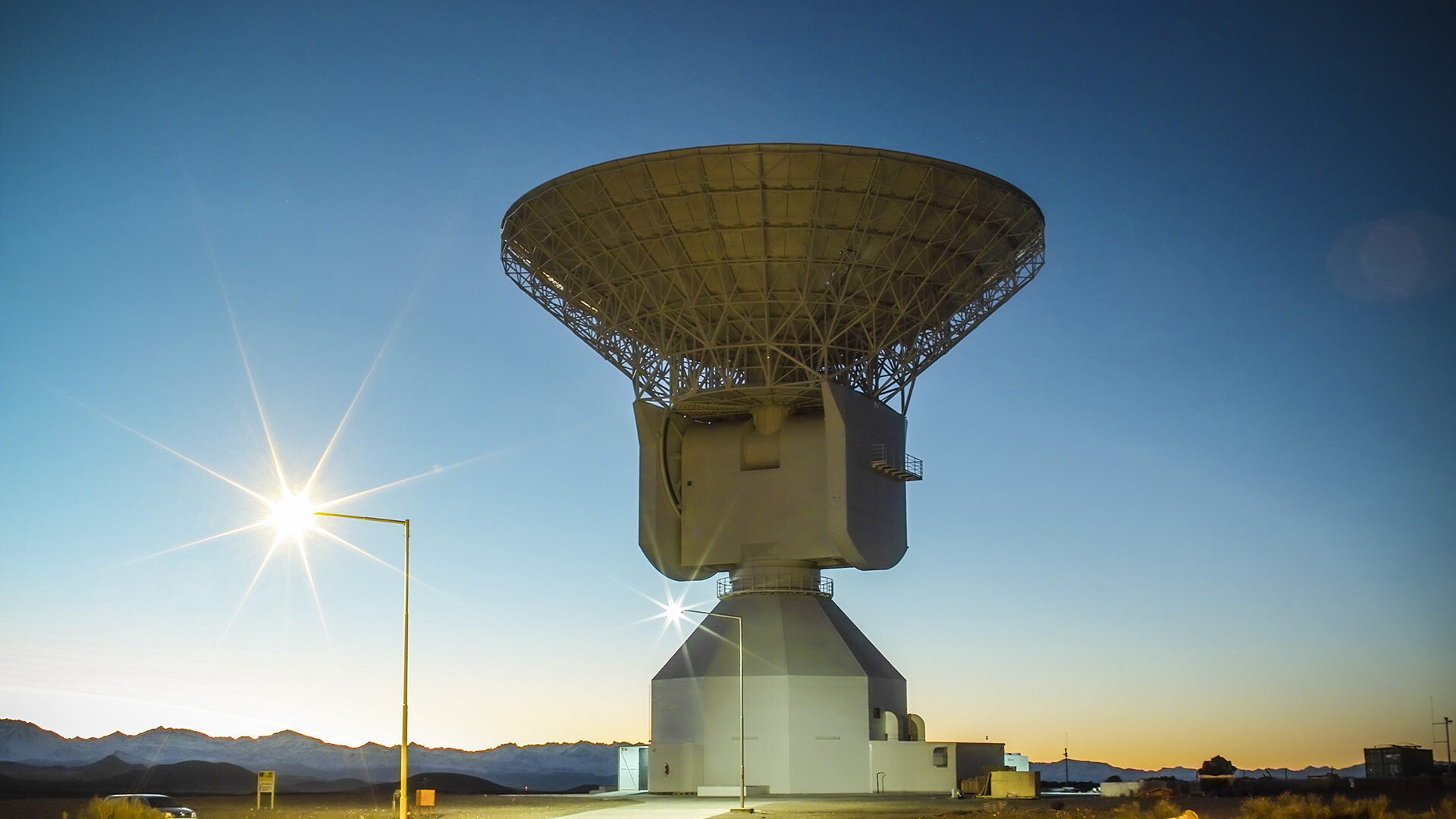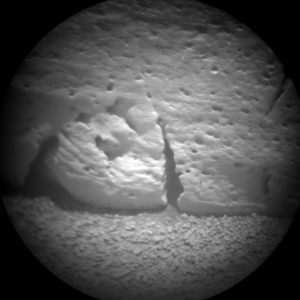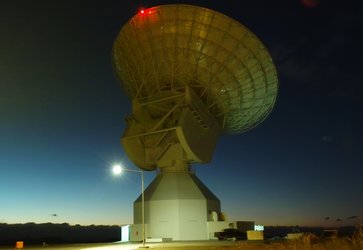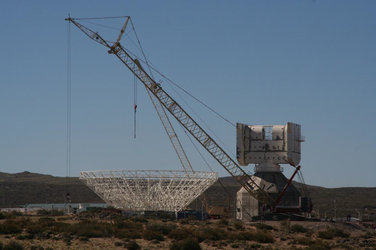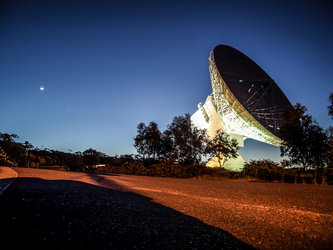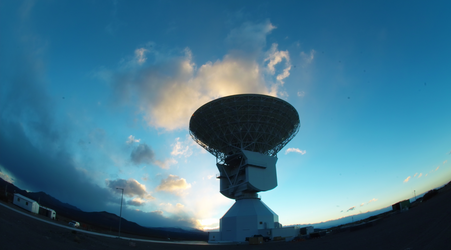ESA’s powerful new tracking station ready for service
A new satellite tracking station at Malargüe, Argentina, will be formally inaugurated on Tuesday, completing the trio of deep-space stations and confirming ESA as one of the world’s most technologically advanced space organisations.
The massive radio reflector dish of ESA’s new station is the most visible indication of the impressive technology that will soon track missions voyaging hundreds of millions of kilometres deep in our Solar System.
Forty metres tall and with a moving antenna assembly weighing 610 tonnes, the station strikes a starkly beautiful pose 1500 m up on an arid Argentinian plain, where high tech meets the high Pampas.
In addition to tracking missions at Mars and Venus, it can also conduct radio science experiments, allowing scientists in Europe and Argentina to study the matter through which the spacecraft–ground communication signals travel.
In exchange for hosting it for a planned 50 years, the station’s capacity will be shared with Argentina, whose CONAE national space office was an instrumental partner.
Station technology by the numbers
“Malargüe station receives X- and Ka-band radio signals, significantly boosting its ability to receive large amounts of data from very far away,” says ESA’s Roberto Maddè, station project manager.
“It’s a marvellous piece of engineering, and years of design and development work at the Agency will come to fruition next week.
We were helped a lot by our Argentinian partners in the making of the station and this collaboration shows how good is the relationship between ESA and CONAE.”
A 20 kW amplifier enables transmission of telecommands hundreds of millions of kilometres into space, while low-noise amplifiers cooled to –258ºC enable receipt of ultra-weak signals from beyond Jupiter.
To compare: the smartphone in your pocket transmits using a puny battery at about 125 milliwatts. This is millions of times more powerful than the signals that Malargüe can receive.

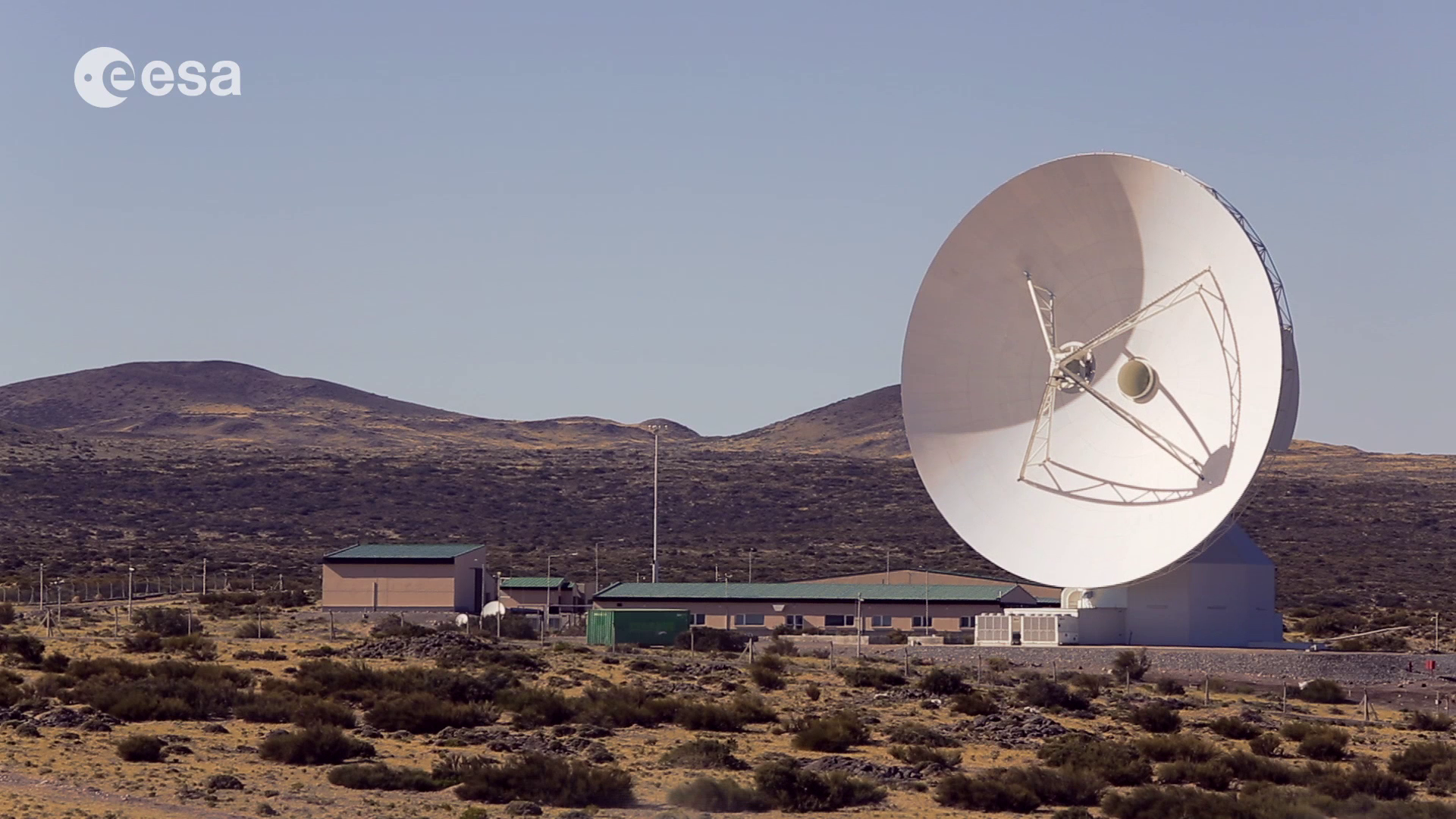
Access the video
High-tech inauguration where Patagonia meets the Andes
The inauguration ceremony will take place at the station, a short drive south of Malargüe, 1200 km west of Buenos Aires, in the presence of Julio de Vido, Argentina’s Minister of Federal Planning, Services and Public Investment.

Thomas Reiter, Director of Human Spaceflight and Operations, and Alvaro Giménez Cañete, Director of Science and Robotic Exploration, will represent ESA.
“The inauguration of Malargüe marks the completion of the Agency’s trio of deep-space stations as part of the Estrack network,” says Thomas Reiter.
“It’s important to note that long-standing technology standardisation work by ESA and our partners means that we can seamlessly exchange data with missions operated by NASA and other agencies, boosting cost efficiencies for everyone.”
We look forward to many years of support from Malargüe station, a wonderful new support for space science of which all Europeans can be proud.
Joining ESA’s existing stations in New Norcia, Australia, and Cebreros, Spain, Malargüe provides the final leg in ESA’s global coverage for deep-space probes.
“Once in regular service in 2013, Malargüe will support ESA Science missions such as Mars Express, Venus Express, Rosetta and, in the future, Gaia, BepiColombo, ExoMars, Solar Orbiter, Euclid and Juice,” says Alvaro Giménez.
“We could not have achieved this without the support of our Argentinian partners. We look forward to many years of support from Malargüe station, a wonderful new support for space science of which all Europeans can be proud.”


